Entity search and knowledge graphs are two powerful tools that have revolutionized the way we access and retrieve information. Entity search refers to the process of retrieving information based on specific entities, such as people, places, or things, rather than just keywords. This allows for more precise and relevant search results, as it takes into account the context and relationships between different entities. On the other hand, knowledge graphs are a way of organizing and representing information in a structured format, linking different entities together based on their relationships and attributes. This allows for a more comprehensive understanding of the information and enables more intelligent and intuitive search capabilities.
Understanding the Role of Entity Search in Information Retrieval
Entity search plays a crucial role in information retrieval by providing more accurate and relevant search results. Traditional keyword-based search engines often return a large number of irrelevant results, making it difficult for users to find the information they are looking for. Entity search, on the other hand, takes into account the context and relationships between different entities, allowing for more precise and targeted search results. For example, if a user searches for "Barack Obama," an entity search engine would understand that the user is looking for information about the former president of the United States, rather than just any mention of the name "Barack Obama." This not only saves time for the user but also ensures that the information retrieved is more accurate and relevant.
In addition, entity search also enables more advanced search capabilities, such as semantic search and natural language processing. This means that users can ask more complex and specific questions, and the search engine can understand the meaning behind the query and retrieve the most relevant information. For example, a user could ask "Who is the current president of France?" and the entity search engine would be able to understand the question and retrieve the most up-to-date information about the current president of France.
The Impact of Knowledge Graphs on Information Retrieval
Knowledge graphs have had a significant impact on information retrieval by providing a more structured and comprehensive representation of information. Traditional search engines often struggle to understand the relationships between different entities and to provide a holistic view of the information. Knowledge graphs address this issue by organizing information in a structured format, linking different entities together based on their relationships and attributes. This allows for a more comprehensive understanding of the information and enables more intelligent and intuitive search capabilities.
One of the key impacts of knowledge graphs on information retrieval is the ability to provide more relevant and personalized search results. By understanding the relationships between different entities, knowledge graphs can provide a more holistic view of the information and retrieve more accurate and relevant results. For example, if a user searches for "best restaurants in New York," a knowledge graph could take into account the user's location, preferences, and previous interactions to provide personalized recommendations for restaurants in New York.
Furthermore, knowledge graphs also enable more advanced search capabilities, such as entity disambiguation and entity resolution. This means that the search engine can understand different entities with similar names or attributes and provide more accurate and relevant search results. For example, if a user searches for "apple," a knowledge graph could understand whether the user is referring to the fruit or the technology company, and retrieve the most relevant information based on the context.
How Entity Search and Knowledge Graphs are Changing the Way We Access Information
Entity search and knowledge graphs are changing the way we access information by providing more accurate, relevant, and personalized search results. Traditional keyword-based search engines often return a large number of irrelevant results, making it difficult for users to find the information they are looking for. Entity search and knowledge graphs address this issue by taking into account the context and relationships between different entities, providing a more comprehensive understanding of the information, and enabling more intelligent and intuitive search capabilities.
One of the key ways in which entity search and knowledge graphs are changing the way we access information is by providing more personalized search results. By understanding the relationships between different entities and taking into account user preferences and interactions, entity search and knowledge graphs can provide personalized recommendations and tailored search results. This not only saves time for the user but also ensures that the information retrieved is more accurate and relevant to their specific needs.
Furthermore, entity search and knowledge graphs are also changing the way we access information by enabling more advanced search capabilities, such as semantic search and natural language processing. This means that users can ask more complex and specific questions, and the search engine can understand the meaning behind the query and retrieve the most relevant information. This not only makes it easier for users to find the information they are looking for but also enables more intuitive and natural interactions with the search engine.
The Advantages of Using Entity Search and Knowledge Graphs in Information Retrieval
There are several advantages to using entity search and knowledge graphs in information retrieval. One of the key advantages is that they provide more accurate and relevant search results. Traditional keyword-based search engines often return a large number of irrelevant results, making it difficult for users to find the information they are looking for. Entity search and knowledge graphs address this issue by taking into account the context and relationships between different entities, providing a more comprehensive understanding of the information, and enabling more intelligent and intuitive search capabilities.
In addition, entity search and knowledge graphs also enable more personalized search results. By understanding the relationships between different entities and taking into account user preferences and interactions, entity search and knowledge graphs can provide personalized recommendations and tailored search results. This not only saves time for the user but also ensures that the information retrieved is more accurate and relevant to their specific needs.
Furthermore, entity search and knowledge graphs also enable more advanced search capabilities, such as semantic search and natural language processing. This means that users can ask more complex and specific questions, and the search engine can understand the meaning behind the query and retrieve the most relevant information. This not only makes it easier for users to find the information they are looking for but also enables more intuitive and natural interactions with the search engine.
Challenges and Limitations of Entity Search and Knowledge Graphs
While entity search and knowledge graphs offer many advantages in information retrieval, there are also several challenges and limitations that need to be addressed. One of the key challenges is ensuring data quality and accuracy within knowledge graphs. Knowledge graphs rely on structured data to represent relationships between different entities, so it is crucial that this data is accurate, up-to-date, and comprehensive. However, maintaining data quality within knowledge graphs can be challenging, especially when dealing with large volumes of data from diverse sources.
Another challenge is ensuring scalability and performance in entity search and knowledge graphs. As the amount of data continues to grow exponentially, it is important that entity search engines and knowledge graphs can scale to handle this increasing volume of data while still providing fast and efficient search capabilities. This requires advanced technologies and infrastructure to support large-scale entity search and knowledge graph applications.
Furthermore, there are also challenges related to privacy and security when using entity search and knowledge graphs in information retrieval. As these technologies rely on collecting and analyzing large amounts of data from diverse sources, it is important to ensure that user privacy is protected and that sensitive information is handled securely. This requires robust security measures and compliance with data protection regulations to ensure that user data is kept safe.
The Future of Information Retrieval: Integrating Entity Search and Knowledge Graphs
The future of information retrieval lies in integrating entity search and knowledge graphs to provide more intelligent, intuitive, and personalized search capabilities. By combining these two powerful tools, we can create a more comprehensive understanding of information, enabling more accurate and relevant search results. This not only saves time for users but also ensures that they can find the information they are looking for more easily.
One of the key areas where we can expect to see integration of entity search and knowledge graphs is in voice-activated assistants and smart devices. By integrating entity search capabilities with knowledge graphs, these devices can provide more intelligent responses to user queries, enabling more natural interactions with users. For example, a user could ask their voice-activated assistant "What are some good Italian restaurants nearby?" and it could use entity search capabilities to understand their location, preferences, and previous interactions to provide personalized recommendations based on a knowledge graph of local restaurants.
Furthermore, we can also expect to see integration of entity search and knowledge graphs in enterprise search applications. By combining these two powerful tools, organizations can provide more intelligent and intuitive search capabilities for their employees, enabling them to find relevant information more easily within large volumes of data. This not only improves productivity but also ensures that employees have access to accurate and relevant information to make informed decisions.
In conclusion, entity search and knowledge graphs have revolutionized the way we access information by providing more accurate, relevant, personalized, intelligent, intuitive, natural language processing capabilities in retrieving data from large volumes of data sources while ensuring privacy protection measures are in place. The future lies in integrating these two powerful tools to create a more comprehensive understanding of information enabling faster access to accurate data while ensuring privacy protection measures are in place.



